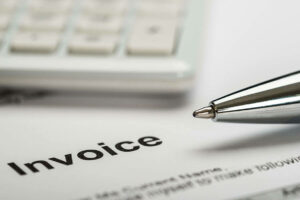
This is achieved through LiveCube, a ‘No Code’ platform, that replaces Excel and automates data fetching, modeling, analysis, and journal entry proposals. The rights or claims to the properties are referred to as equities. Metro issued a check to Office Lux for $300 previously purchased supplies on account. Finally, a cash flow statement can be produced for the period and reports the change in cash balances between periods. Before taking this lesson, be sure to be familiar with the accounting elements. To learn more about the balance sheet, see our Balance Sheet Outline.
- For instance, if a company goes bankrupt, its assets are sold in the funds are used to settle debts first.
- Once your transactions are synced, your accounting software can crunch the numbers for you.
- It must always balance and the fundamental accounting equation, assets equals liabilities plus equity, provides the basis for the recording of all business transactions.
- The balance sheet is one of the three fundamental statements, alongside the income statement and the cash flow statement.
- The capital would ultimately belong to you as the business owner.
- For example, an increase in an asset account can be matched by an equal increase to a related liability or shareholder’s equity account such that the accounting equation stays in balance.
What is the difference between an asset and a liability?
An automated accounting software like QuickBooks makes it easy to run financial reports and plug the numbers for these equations. Once your transactions are synced, your accounting software can crunch the numbers for you. And, of course, if you’re feeling overwhelmed by all fundamental accounting equation the pluses and minuses, an accounting professional can help. Most small business owners don’t feel entirely confident when it comes to things like accounting and managing business finances. After all, you started your business to follow your heart, not to solve equations.

The accounting equation And how it stays in balance

The accounting equation asserts that the value of all assets in a business is always equal to the sum of its liabilities and the owner’s equity. For example, if the total liabilities of a business are $50K and the owner’s equity is $30K, then the total assets must equal $80K ($50K + $30K). The accounting equation states that a company’s total assets are equal to the sum of its liabilities and its shareholders’ equity. The accounting equation equates a company’s assets to its liabilities and equity. This shows all company assets are acquired by either debt or equity financing. For example, when a company is started, its assets are first purchased with either cash the company received from loans or cash the company received from investors.
Shareholder’s Equity
Remember that capital is increased by contribution of owners and income, and is decreased by withdrawals and expenses. Taking time to learn the accounting equation and to recognise the dual aspect of every transaction will help you to understand the fundamentals of accounting. Whatever happens, the transaction will always result in the accounting equation balancing. The inventory (asset) of the business will increase by the $2,500 cost of the inventory and a trade payable (liability) will be recorded to represent the amount now owed to the supplier.
Accountingo.org aims to provide the best accounting and finance education for students, professionals, teachers, and business owners. Understanding how the accounting equation works is one of the most important accounting skills for beginners because everything we do in accounting is somehow connected to it. The process of recording these transactions will continue across the period. In reality, a business may have thousands, with each one affecting at least two accounts. The inventory asset is recorded and the obligation to pay the suppliers is reflected as a liability.
A low profit margin may also indicate that your inventory is imbalanced or that your business is simply not handling expenses well. Whereas a high profit margin generally indicates a healthy company. And equity is the value of the portion of your company that belongs to you, the owner.
Why You Can Trust Finance Strategists
- Obligations owed to other companies and people are considered liabilities and can be categorized as current and long-term liabilities.
- For example, if a company becomes bankrupt, its assets are sold and these funds are used to settle its debts first.
- The trial balance includes columns with total debit and total credit transactions at the bottom of the report.
- If a business buys raw materials and pays in cash, it will result in an increase in the company’s inventory (an asset) while reducing cash capital (another asset).
$10,000 of cash (asset) will be received from the bank but the business must also record an equal amount representing the fact that the loan (liability) will eventually need to be repaid. The cash (asset) of the business will increase by $5,000 as will the amount representing the investment from Anushka as the owner of the business (capital). Regardless of how the accounting equation is represented, it is important to remember that the equation must always balance. This number is the sum of total earnings that were not paid to shareholders as dividends. It can be defined as the total number of dollars that a company would have left if it liquidated all of its assets and paid off all of its liabilities. So, let’s take a look at every element of the accounting equation.